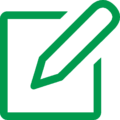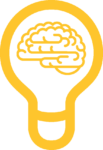
Can you believe there are only 2 months left in the year? Like most of my friends and colleagues, the last few weeks have come and gone in the blink of an eye. I can only imagine that the pattern will continue through December!
The end of the year often brings excitement– both personally and professionally. As people make plans for holiday celebrations and work projects quickly advance to a close, activity is typically high during this period of time.
With so many to-dos, decisions to be made and goals to achieve, it’s only natural to feel the effects of fatigue. If you feel like you have a lot (perhaps a bit too much) to balance during this season, I invite you to consider what the early warning signs of burnout may look like and feel like, so that you can proactively take steps to pause, re-energize and manage all that is in front of you.
One way to consider fatigue is through the lens of the Emergenetics® Attributes. When people get tired, they commonly lean into their favored neural pathways because less mental energy is required to rely on the familiar than to think holistically.
Often, this reaction means that our preferred Attributes and behavioral tendencies are on full display. Let’s explore what each Attribute may look like when it’s in overdrive.
Fatigue Through the Attributes
![]() Assessing Expressiveness
Assessing Expressiveness
The Expressiveness Attribute reveals how people prefer to process their thoughts and feelings. Those in the first-third, who often prefer time for introspection, may find themselves getting lost in rumination when they are drained. In comparison, people in the third-third may state all their feelings without filtering their viewpoints. Those in the second-third might gravitate toward either approach.
 Exploring Assertiveness
Exploring Assertiveness
Assertiveness describes the style and pace with which people advance their thoughts and beliefs. When weariness creeps in, first-third Assertive individuals may be reluctant to express an opinion, which can be misunderstood as acceptance or disinterest. Those in the third-third are likely to make a decision and move their idea forward at a forceful pace, which can hasten burnout. The circumstances will influence whether people in the second-third of Assertiveness adopt one style or the other.
![]() Investigating Flexibility
Investigating Flexibility
The Flexibility spectrum considers how individuals react to imposed change. Those in the first-third may be more adamant about sticking to defined plans and less open to alternatives when they are tired. Meanwhile, people in the third-third may find it increasingly difficult to choose a direction and appear indecisive. Second-third Flexible individuals are likely to lean toward one end of the spectrum or the other based on the situation.
 Evaluating Analytical
Evaluating Analytical
Those who prefer Analytical thinking often value logic and efficiency. When fatigue strikes, the Analytical Attribute may be more inclined to narrow in on just the bottom line and facts. It may be misperceived as unemotional or intimidating as a desire to meet objectives takes sole focus.
 Considering Structural
Considering Structural
The Structural Attribute appreciates dependability and adherence to plans. Individuals with this preference who are feeling stretched thin may be misunderstood as rigid, as they strive to maintain order and follow proven practices.
 Contemplating Social
Contemplating Social
Those with a Social preference are typically innately aware of the feelings of others. As burnout starts to take hold, they can be seen as overly sensitive as they may be more inclined to let emotional interests take priority.
 Examining Conceptual
Examining Conceptual
People with a Conceptual preference tend to enjoy ideation and imagination. For the Conceptual Attribute, tiredness may be associated with distraction. Often, individuals who prefer Conceptual thinking struggle to move past the daydreaming or brainstorming state when exhaustion mounts.
4 Ways to Address Fatigue
#1 – Naming and Noting
Considering your preferences, review the list above and determine if any of these descriptors reflect your actions when you feel weary. Jot down a few notes that align with your experiences and catalog any other common behaviors or feelings you get when you are tired. That way, you can keep an eye out for warning signals.
#2 – Embrace Mindfulness
When the tendencies you’ve noted begin to show, take a moment and breathe. Simply taking a few deep breaths in and out can help calm the nervous system and clear your thinking. For more mindfulness exercises, I encourage you to consider the Mayo Clinic’s perspective.
#3 – Prioritize To Do’s
Review the action items on your list and assess what really needs to be accomplished and when. Sometimes, in the midst of the fourth quarter, it’s tempting to set an end-of-year deadline for professional or personal tasks that may be more fluid than we realize. Assess your timelines and set boundaries to ensure that your next steps align with the highest needs of your company and yourself.
#4 – Find Ways to Re-energize
Making time for yourself is vital, especially when you are feeling pulled in many directions. It’s hard to recover without supporting your own well-being. Whether taking a nature walk, reorganizing your space, reconnecting with friends or engaging in a favorite activity, make time for self-care. For ideas aligned to your Emergenetics preferences, I encourage you to review this post by my colleague Bill Zubek. While originally written for educators, EVERYONE can benefit from these tips!
The end of the year can be commonly associated with fatigue and stress, and that does not have to be the case for you! By prioritizing your well-being and looking out for signs of overwhelm, you can set yourself up for success in your personal and professional life.
Feeling the effects of end-of-year tension? Learn more about Hone Your Habits: Managing Stress in The egLearning Library or fill out the form below to speak with one of our team members about how our digital courses may help!
 Print This Post
Print This Post
